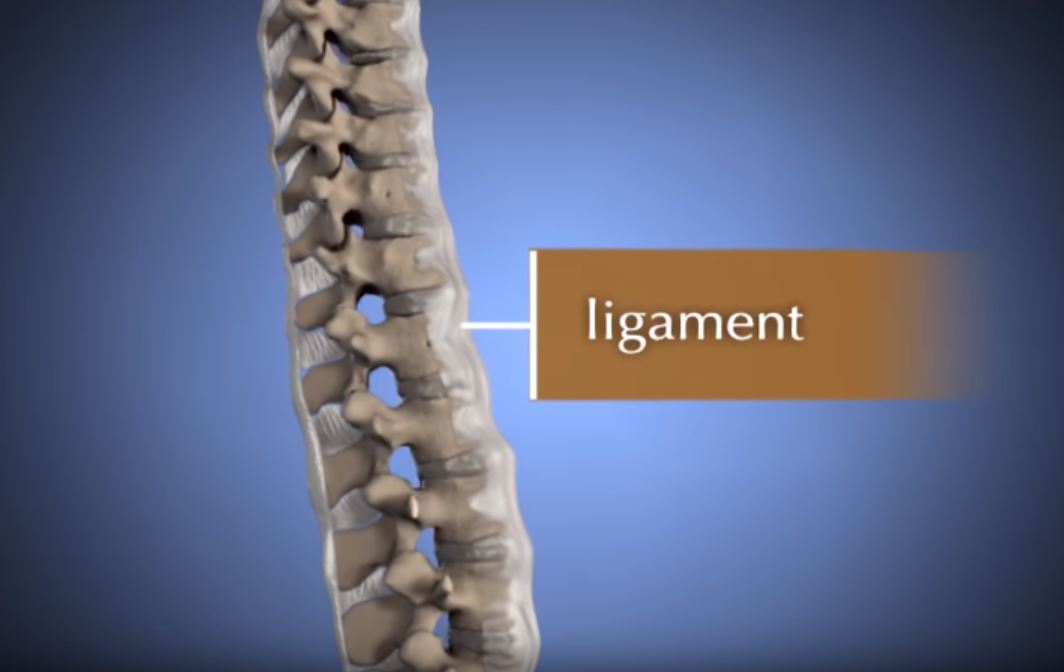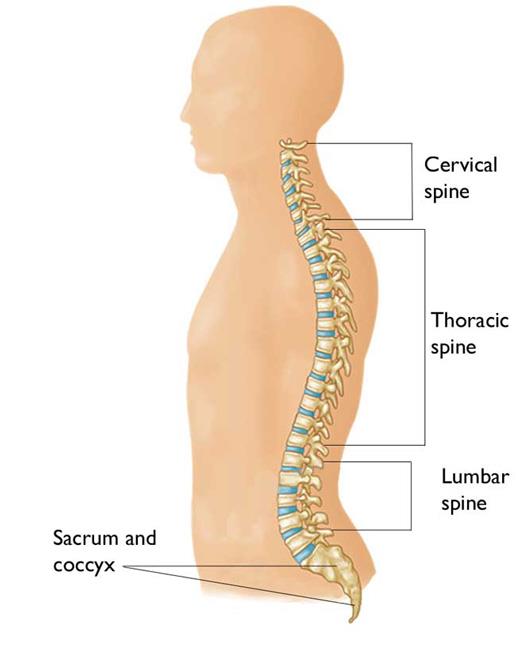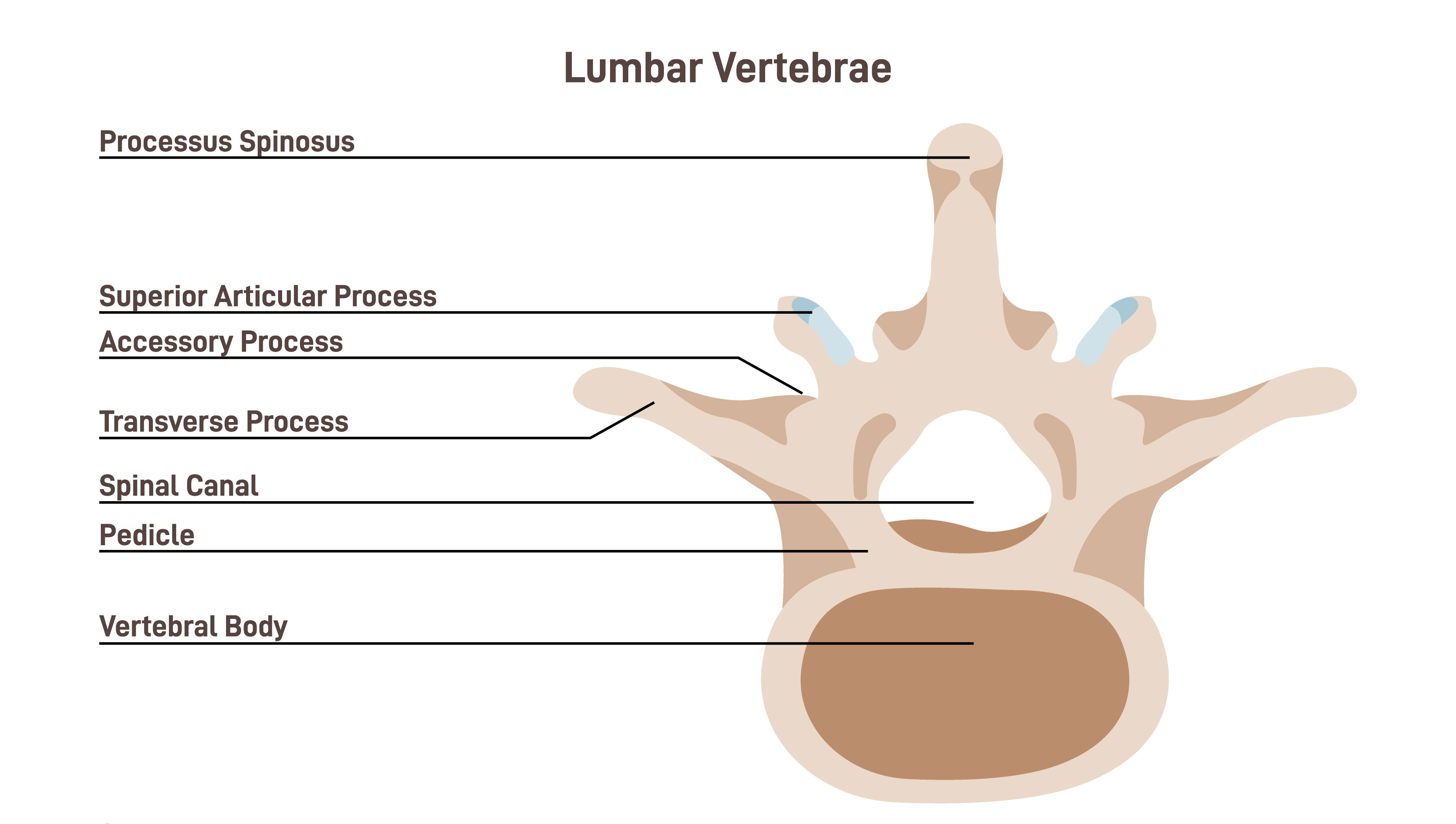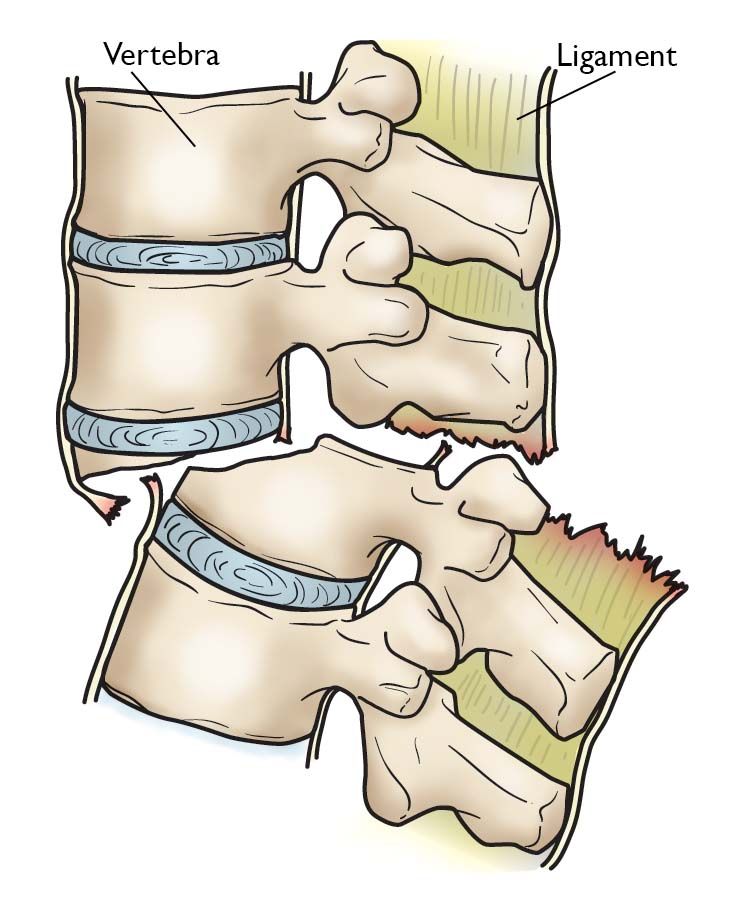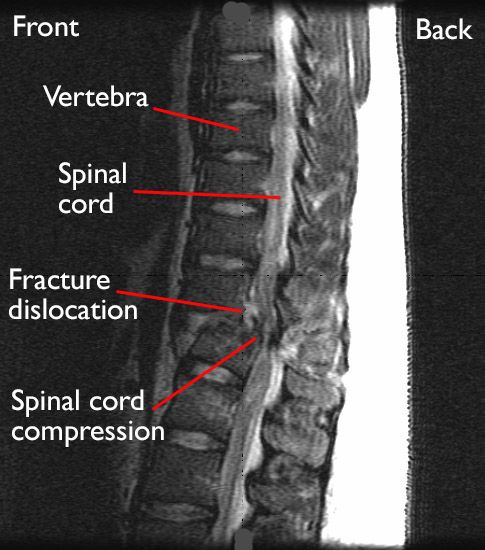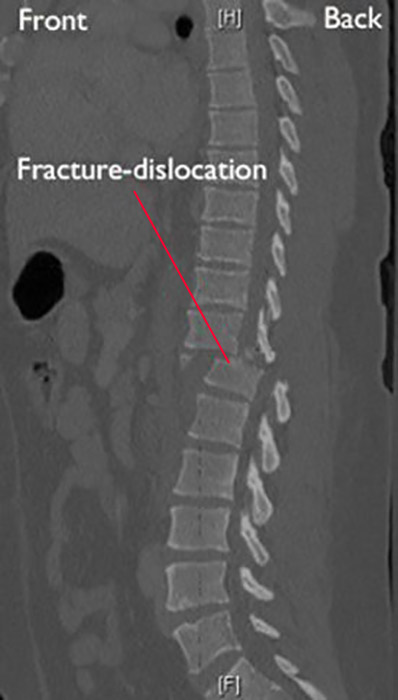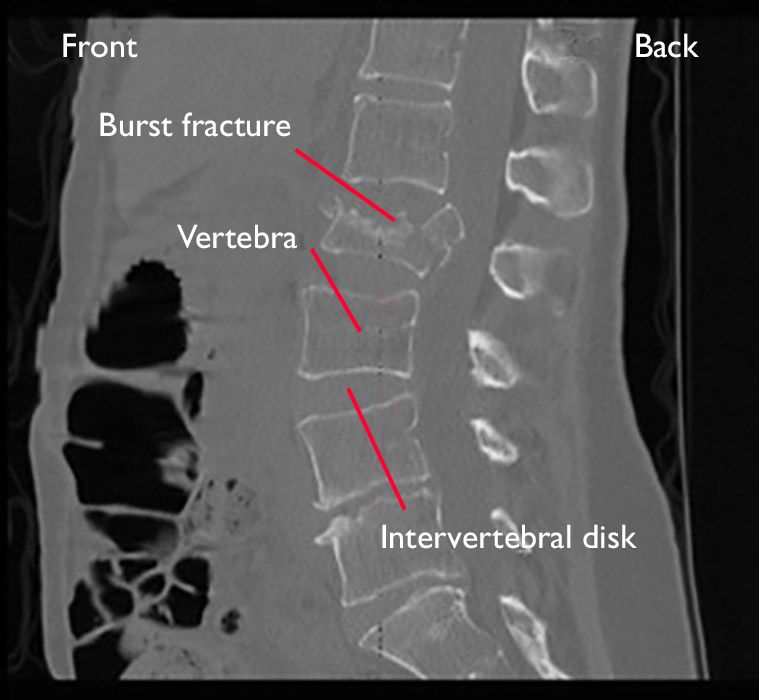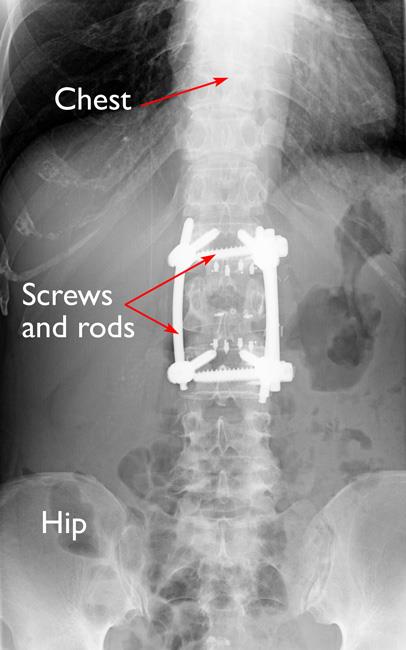Diseases & Conditions
Fractures of the Thoracic and Lumbar Spine
This article focuses mainly on spinal fractures due to trauma. For more in-depth information about osteoporotic spinal fractures, please read Osteoporosis and Spinal Fractures.
Spinal fractures can vary widely in severity and treatment. They can be caused by:
- A high-energy trauma, such as a motor vehicle collision
- A low-energy event, such as a minor fall, in an older person whose bones are weakened by osteoporosis
There are many factors that influence the treatment of spinal fractures, including the severity of the fracture and whether the patient has any associated injuries.
Anatomy
The spine is made up of 33 bones. The individual bones of the spine are called vertebrae. The spine is divided into three sections:
- Cervical (upper)
- Thoracic (midback)
- Lumbar (lower back)
Most spinal fractures occur in the thoracic and lumbar spine, or at the connection of the two (called the thoracolumbar junction).
Learning how your spine works will help you to understand spinal fractures. For an overview of the spine: Spine Basics
Cause
Fractures of the thoracic and lumbar spine may result from high-energy trauma, such as :
- Car or motorcycle collision
- Fall from a significant height
- Sports accident
- Violent act, such as a gunshot wound
People involved in high-energy accidents often have multiple injuries, some of which can be serious or life-threatening and require rapid evaluation and treatment. It is not uncommon for the spine and the surrounding nerves to be injured in high-energy accidents.
Spinal fractures may also be caused by weak or brittle bones. For example, people with osteoporosis, tumors, or other underlying conditions that weaken the bone can fracture a vertebra even during lower-impact events — such as reaching or twisting or falling from a standing height. Fractures in patients with weak bones can also develop over time and go unnoticed until an event or accident causes a significant increase in pain.
Description
There are different types of spinal fractures. Doctors classify fractures of the thoracic and lumbar spine based on the specific pattern of the fracture and whether there is a spinal cord injury. Spine surgeons will classify spinal fractures to help determine which kind of treatment is needed.
Spine fractures are often classified into three groups:
- Flexion
- Extension
- Rotation
Fractures Caused by Flexion
Compression fracture. In a compression fracture, the anterior (front) of the vertebra is compressed and breaks, but the posterior (back) part of the vertebra does not.
This type of fracture:
- Is usually stable, meaning the spine is still able to support the weight of your body without causing the bones to shift and move
- Is rarely associated with neurologic problems
- Commonly occurs in patients with osteoporosis
Burst fracture. In a burst fracture, both the front and the back of the vertebra are broken. Burst fractures can be caused by landing on the feet after falling from a significant height.
This type of fracture:
- Can sometimes result in nerve compression
- Is sometimes stable and sometimes unstable (the spine is not able to support the weight of your body without causing the bones to shift or move)
- May require surgery, depending on the stability of the spine and whether there is nerve injury
Fractures Caused by Extension
Flexion/distraction (Chance) fracture. During a flexion/distraction fracture, the vertebra is pulled apart (distraction). This type of fracture can occur in a head-on car collision when the upper body is thrown forward while the pelvis is stabilized by a lap seat belt.
These fractures:
- Are typically unstable and cannot support the weight of the person
- Often require surgery
Fractures Caused by Rotation
Transverse process fracture. Fractures to the transverse process result from rotation or extreme lateral (sideways) bending.
This type of fracture:
- Does not usually affect stability
- Does not therefore require surgery
Vertebral facture-dislocation. Fracture-dislocation of the vertebra involves bone and/or soft tissue in which a vertebra moves off an adjacent (nearby) vertebra (displacement).
These injuries:
- Are unstable
- Frequently cause serious spinal cord compression
- Require surgery
Symptoms
- A fracture of the thoracic or lumbar spine causes moderate to severe back pain that is worsened with movement.
- If the spinal cord or nerves are affected during the fracture, the patient may experience bowel/bladder dysfunction along with numbness, tingling, or weakness in the arms or legs.
- If the fracture is caused by high-energy trauma, the patient may also have a brain injury and lose consciousness, or "pass out." If the patient is reported to have lost consciousness during the injury or is still unconscious, spine injury is often assumed. There may also be other injuries that are more painful than the pain caused by fractures of the spine. In these cases, it has to be assumed that the patient has a fracture of the spine, especially after a high-energy event such as a motor vehicle collision.
Doctor Examination
Emergency Stabilization
Patients with fractures of the thoracic and lumbar spine that have been caused by trauma need emergency evaluation and treatment. However, it may be difficult to assess the extent of their injuries on first evaluation.
At the accident scene:
- EMS rescue workers will first check the patient's vital signs, including consciousness, ability to breathe, and heart rate.
- After the vital signs are stabilized, rescue workers will assess obvious bleeding and limb-deforming injuries.
- Before moving the patient, the EMS team will immobilize the individual in a cervical (neck) collar and backboard.
The patient is then transported to the hospital for more detailed exams in the emergency room.
Physical Examination
- The emergency room doctor will conduct a thorough evaluation, beginning with a head-to-toe physical examination of the patient. This will include an inspection of the head, chest, abdomen, pelvis, limbs, and spine. The doctor will evaluate the patient's neurological status. This includes testing:
- The patient's ability to move, feel, and sense the position of all the limbs.
- The patient's reflexes, to help determine whether there has been an injury to the spinal cord or individual nerves.
- The doctor may also check the tone of the anal muscles and determine whether the patient is able to empty their bladder without assistance. Problems with bowel and bladder function may indicate a more serious spinal cord injury.
Tests
Imaging tests. After the physical examination, a radiologic evaluation is required. Depending on the extent of injuries, this may include X-rays, computerized tomography (CT) scans, and magnetic resonance imaging (MRI) scans of multiple areas, including the thoracic and lumbar spine.
Treatment
Treatment for a fracture of the thoracic or lumbar spine will depend on:
- Other injuries and their treatment
- The fracture pattern
- Whether there is neurological injury
Once the trauma team has stabilized all other life-threatening injuries, the doctor will evaluate the spinal fracture pattern and decide whether spine surgery is needed.
Fractures Caused by Flexion
Nonsurgical treatment. Most flexion injuries — including stable burst fractures and compression fractures — can be treated without surgery and can sometimes benefit from bracing. By gradually increasing physical activity and doing rehabilitation exercises, most patients avoid post-injury problems.
Surgical treatment. Surgery is typically required for unstable burst fractures that have:
- Significant comminution (multiple bone fragments)
- Severe loss of vertebral body height
- Severe deformity, usually in the form of forward bending or angulation at the injury site
- Excessive forward bending or angulation at the injury site. According to Healthline, an angulated fracture “occurs when a bone breaks, comes out of alignment, and tilts at an angle."
- Significant nerve injury due to parts of the vertebral body or disk pinching the spinal cord
- Ligament damage that makes the spine unstable
These fractures should be treated surgically to:
- Clear the spinal canal of objects that could be causing compression on the spinal cord, such as bone and/or soft tissue
- Stabilize the fracture
The procedure to decompress the spine (relieve pressure on the spinal cord) is called a laminectomy.
In a laminectomy, the doctor removes the bony arch that forms the backside of the spinal canal (lamina), along with any bone or other structures that are pressing on the spinal cord. This provides more room for the spinal cord.
To perform the laminectomy, your doctor will access your spine with an incision either on your side or on your back. Both approaches allow for safe removal of the structures compressing the spinal cord, while preventing further injury.
After the laminectomy, your doctor will stabilize the fracture by reconstructing the damaged bone or placing screws above and below the fracture.
Fractures Caused by Extension
Treatment for extension injuries will depend on various aspects of the injury, including:
- Which part of the spine is damaged
- How much damage has occurred because of the fracture
Nonsurgical treatment. Extension fractures that occur only through the vertebral body can typically be treated without surgery. These fractures should be observed closely while the patient wears a brace or cast for about 12 weeks.
Surgical treatment. Surgery is usually necessary if there is an injury to the posterior (back) ligaments of the spine. Another reason surgery may be needed is if the fracture involves multiple vertebrae.
Fractures Caused by Rotation
Nonsurgical treatment. Transverse process fractures are usually treated with a gradual increase in motion, with or without bracing, based on comfort level.
Surgical treatment. Fracture-dislocations of the thoracic and lumbar spine are caused by very high-energy trauma. They can be extremely unstable injuries that often result in serious spinal cord or nerve damage. These injuries require surgery to stabilize the spine. The ideal timing of surgery can often be complicated. Surgery is sometimes delayed because of other serious, life-threatening injuries.
Surgical Procedure
The ultimate goals of surgery are to:
- Achieve adequate reduction (return the bones into their proper position)
- Stabilize the fracture
- Relieve pressure on the spinal cord and nerves
- Allow for early movement
Depending on the fracture pattern, the doctor may perform the procedure through either an anterior (front), lateral (side), or posterior (back) cut in the skin (incision). Sometimes, the doctor will use a combination of all three incision locations.
There are many types of specialized instruments used in spine surgery. These include metal screws, rods, and cages used to stabilize the spine.
Complications
Complications associated with fractures of the thoracic and lumbar spine include:
- Blood clots in the pelvis and legs — these may develop from staying in bed for long periods of time or not moving the legs. Learn more: Deep Vein Thrombosis
- Pulmonary embolism — a blood clot that enters the lungs and blocks blood flow. A pulmonary embolism is a medical emergency.
- Pneumonia (lung infection)
- Sores that develop from laying in one position for too long, also known as pressure sores.
There are also specific complications associated with spinal surgery. These include:
- Bleeding
- Infection
- Spinal fluid leaks
- Instrument failure
- Bones that do not heal, also known as nonunions
- Wound complications
Your doctor will talk with you about these risks, and your care team will take specific measures to avoid potential complications before, during, and after your surgery.
Outcomes
Regardless of whether treatment is surgical or nonsurgical, there will be a period of rehabilitation after a fracture has healed.
The goals of rehabilitation include:
- Reducing pain
- Restoring mobility
- Returning the patient as closely as possible to their pre-injury state
Your doctor may recommend physical therapy while you are in the hospital and/or when you go home from the hospital to help you achieve these goals.
If your fracture was caused by osteoporosis, you are at an increased risk for additional fractures. Your doctor will recommend treatments to address bone density loss during your treatment and recovery — or, they may refer you to another doctor who specializes in osteoporosis treatment.
In some cases, there may be issues that delay or complicate rehabilitation and recovery. These issues include:
- Inadequate reduction of the fracture (meaning, the vertebrae are not in their proper places)
- Neurologic injury (paralysis)
- Deformity of the spine that gets worse over time
Fractures of the thoracic and lumbar spine can be very painful, and it is not uncommon to have continued back pain for several months. The recovery process from a spine fracture is slow, but many people can make a good recovery.
Contributed and/or Updated by
Peer-Reviewed by
AAOS does not endorse any treatments, procedures, products, or physicians referenced herein. This information is provided as an educational service and is not intended to serve as medical advice. Anyone seeking specific orthopaedic advice or assistance should consult his or her orthopaedic surgeon, or locate one in your area through the AAOS Find an Orthopaedist program on this website.







